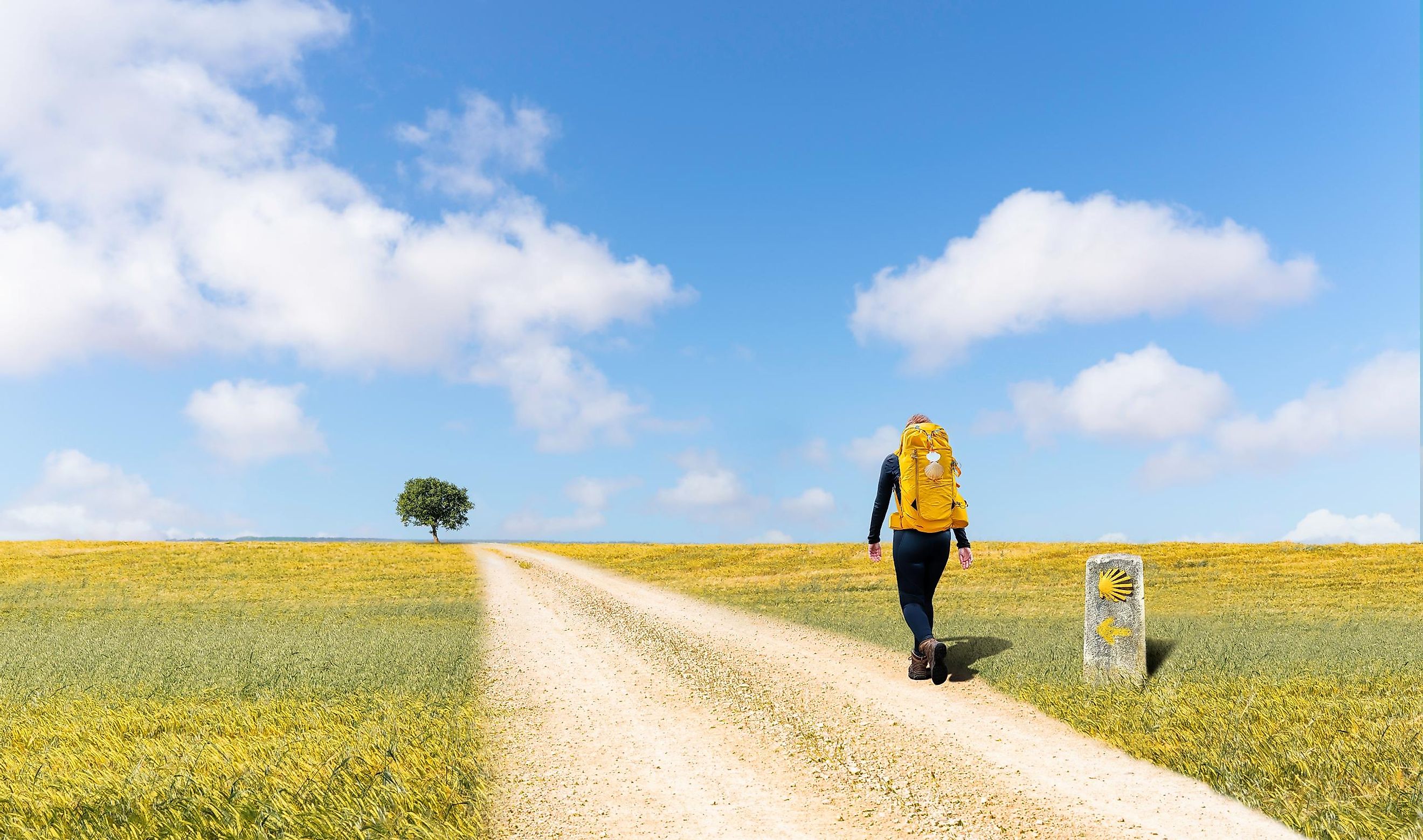
How Far Is The Camino De Santiago?
The Camino de Santiago is not a singular route with a set distance but a network of walking paths converging in Northwestern Spain from various starting points across Western Europe. Camino de Santiago (Way of Saint James) is a unifying term used to describe any pilgrimage to the Galician city of Santiago de Compostela, where the remains of Saint James the Greater, patron saint of Spain and Apostle of Jesus, are said to rest. While several factors dictate the overall distance one may cover on this journey, some classic routes have predetermined (but still optional) total lengths. For instance, the Camino Francés (i.e., the most popular pilgrimage) is listed as 764 kilometers (475 miles). However, a hostel full of backpackers in Santiago can all technically claim to have accomplished this undertaking (and prove it with official certification), even if their step counts or GPS trackers show significant variability. So why the discrepancy?
Where Does The Camino Start?
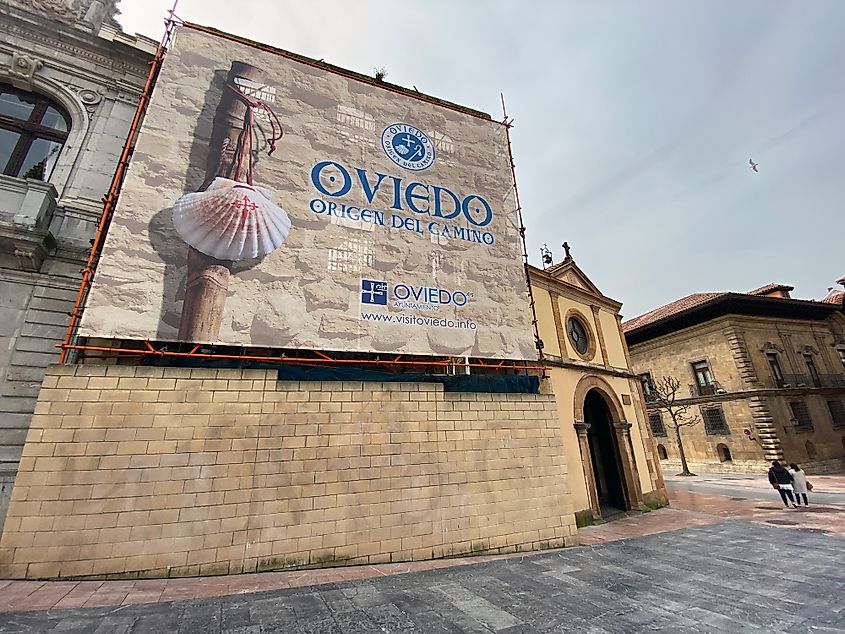
Determining what distance a pilgrim has to cover naturally depends on where they intend to start the journey and which endpoint suits their interest (more on this in a moment). Traditionally, pilgrims would simply embark from their homes or gather with members of their local parish before setting forth on whatever route seemed the most sensible. Old Roman trade roads were utilized in the Cantabrian Mountains and the North-South Via de la Plata. As were pagan paths, such as those along the Costa da Morte (Coast of Death) between Finisterre and Muxia and inland towards Compostela. And many chose to follow in the footsteps of Alfonso II of Asturias, who made the first pilgrimage to the tomb of Saint James from Oviedo (a route now known as the Camino Primitivo or Primitive Way).
The Camino de Santiago started to take more shape after the formation of the Camino Francés in the 11th century and the publication of the 12th-century Codex Calixtinus – the first guidebook (among other things). This gave pilgrims an opportunity to converge in Saint-Jean-Pied-de-Port, on the French side of the Pyrenees, or any of the major Camino towns along the way, and walk the remainder of the distance across Northern Spain – frequenting churches, shelters, bridges, and even military aid to support their sojourn.
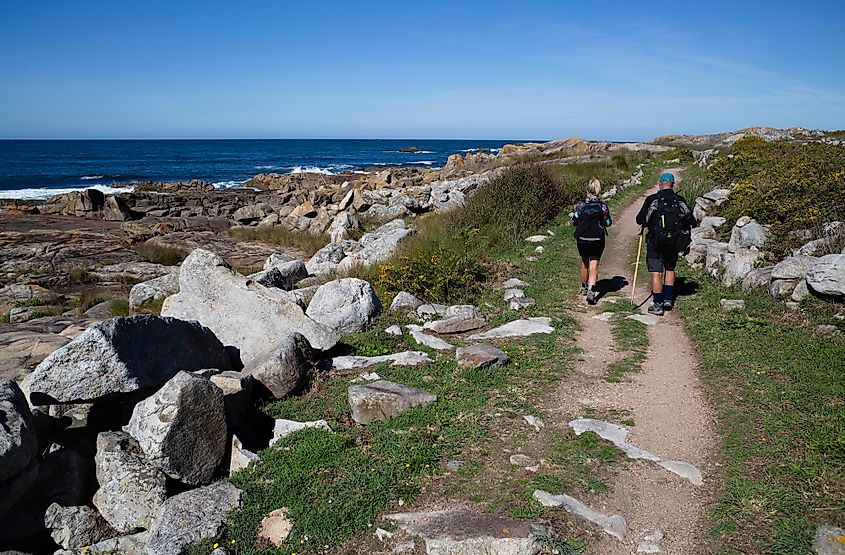
Nowadays, many people seeking to walk (or cycle) the Camino de Santiago choose a definitive starting point based on their personal goals, or the itinerary laid out by a tour group. Factors such as the time/budget one can afford to allocate, fitness level, desired scenery and points of interest, and seasonal climate all have to be taken into consideration. With that said, there are a handful of routes that most people gravitate towards: the Camino Francés, Camino del Norte, Camino Portugués (specifically, the Coastal Way), Camino Primitivo, Camino Inglés, and Via de la Plata. Each of these has a suggested beginning, but also a sensible mid-way drop-in spot and even a last-call starting point for pilgrims wanting to cover the minimum 100 kilometers/62 miles (200 km/124 miles for cyclists) in order to receive their certificate in Compostela.
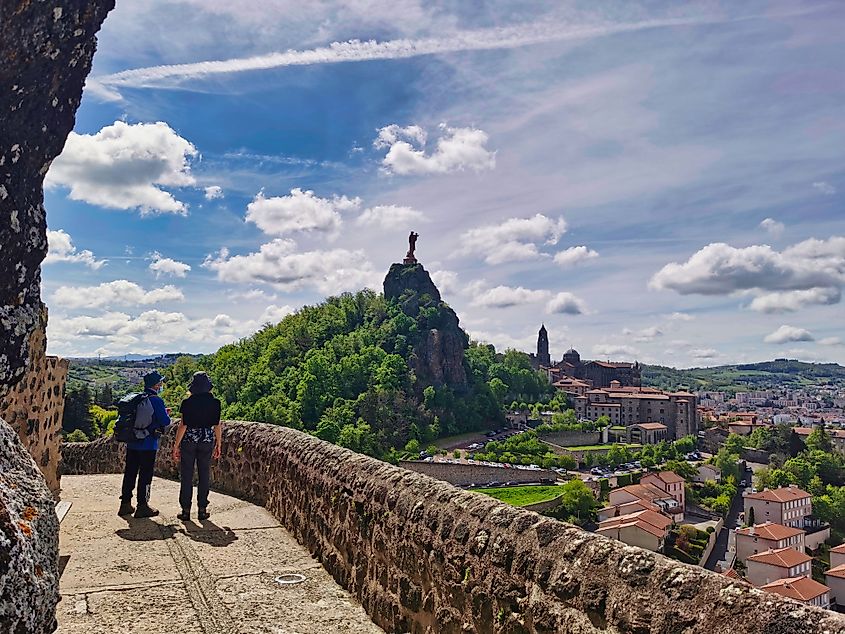
In order to provide some concrete examples, let's look at the Camino Francés. Last year, 439,000 pilgrims reached Santiago, and the overwhelming majority did so via the French Way. This formal route begins in the quaint mountain town of St.-Jean-Pied-de-Port, France (though some begin as far away as Paris), and crosses parts of the autonomous communities of Aragon, Navarre, La Rioja, Castilla y León, and Galicia. The first day of walking through the Pyrenees/Basque Country is widely considered to be the most beautiful but also the most strenuous of the entire pilgrimage. To shorten the distance, but also because of transportation logistics, some pilgrims begin their trek from the bull-running streets of Pamplona, the striking Cathedral of León, or the Templar Castle of Ponferrada. But the hands-down favorite start to the Camino Francés is in the municipality of Sarria. In fact, nearly ⅓ of all pilgrims (all routes included) have started in Sarria in recent years. This is because it is conveniently located 114 kilometers (71 miles) from Santiago de Compostela – just ahead of the minimum cut-off to become a certified pilgrim (and, if you share in the Catholic faith, to pay penitence).
Other popular starting points include Tui, Spain (Camino Portugués); Ferrol, Spain (Camino Inglés); Porto, Portugal (Camino Portugués: The Coastal Way); and Oviedo, Spain (Camino Primitivo).
Where Does The Camino Finish?
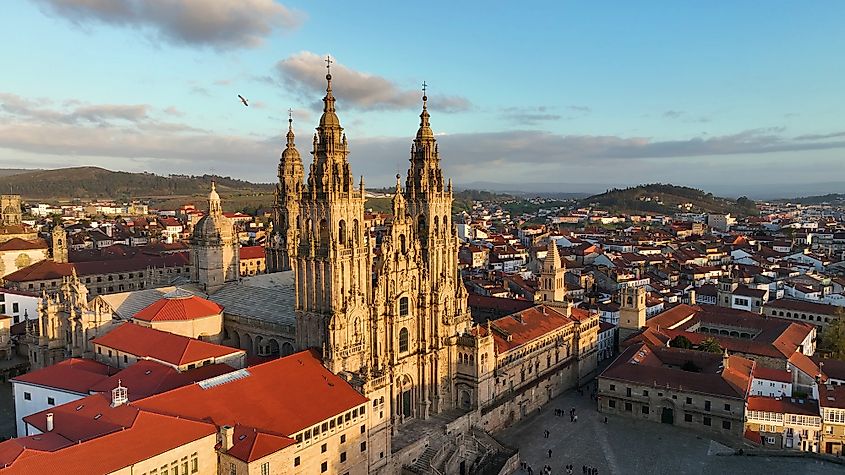
Deciding where the Camino de Santiago ends is much more cut and dry. There are three or four main options. By far, the most common finish line is the Cathedral of Santiago de Compostela. Here, outside of the main entrance, dozens, if not hundreds, of weary yet ecstatic hikers can be seen gathered in the Praza do Obradoiro on any given day. After taking pictures and reflecting on the life-changing journey, they will likely get their final stamp on their pilgrim's passport from the church, a certificate of completion from the adjacent pilgrim's office, and then enjoy the sights, sounds, and tastes of the Galician capital before hopping a plane, train, or bus home (all of which can be procured in Santiago de Compostela).
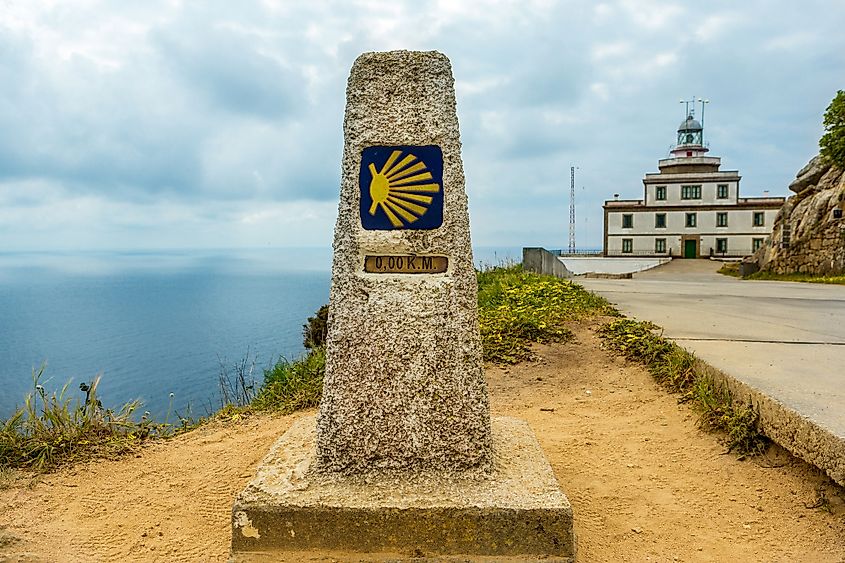
A small subset of finishers (some estimates suggest 1%) elect to continue to the Northwest coast of Spain. After walking for weeks on end (perhaps months), it can be strangely difficult to stop. Plus, the call of the Atlantic Ocean may be particularly strong for those who have taken a predominantly inland route to Santiago. Just West of the Old Town's main square, the familiar yellow arrows and scallop shell markers resume, leading the way to either Muxia (an additional 86 kilometers/53 miles away) or Finisterre (89 km/55 miles), which means "End of the Earth." Both are places of immense beauty and historical significance in regard to Camino lore.
The fourth option for finishing the Camino is to return from whence you came. Back in the Middle Ages, pilgrims couldn't just head to the train station or catch a taxi to the airport (yes, Santiago de Compostela does operate an international airport) – they had to turn around and walk all the way home. If only a fraction of pilgrims add on the 90 kilometers to the coast, then a likely immeasurably small fraction of that fraction make a round-trip pilgrimage. But if the Camino teaches us anything, it is that miracles happen every day. Ask around the albergues (pilgrim hostels), and you'll be sure to find someone doubly up the distance.
Distances Of The Core Camino De Santiago Routes
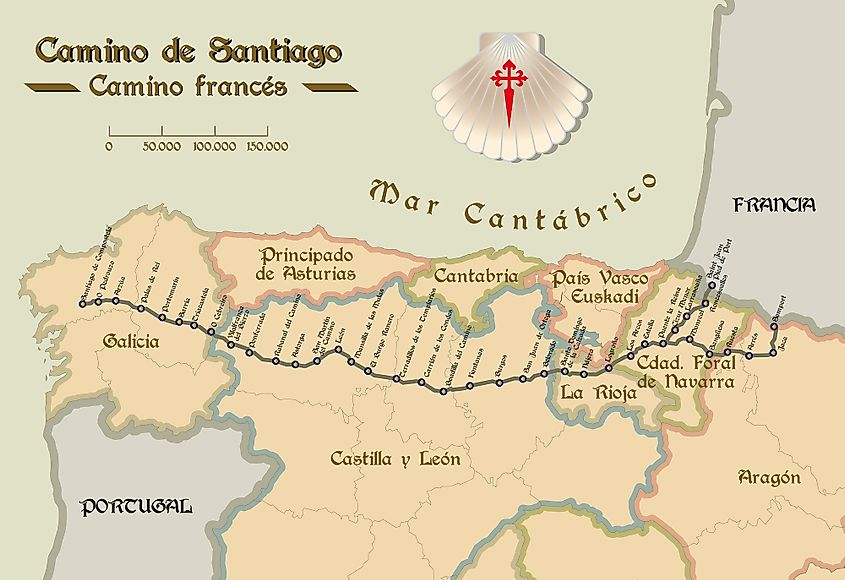
So, setting all of the various qualifiers aside, how far, generally speaking, are the Camino de Santiago pilgrimages? Assuming the Santiago de Compostela endpoint, the French Way from St.-Jean-Pied-de-Port is about 764 kilometers, the Portuguése Way from Lisbon is 620 km, the Portuguése Coastal Way from Porto is 266 km, the English Way from Ferrol is 119 km, the Primitive Way from Oviedo is 313 km, the Northern Way from Irún is 824 km, and the Via de la Plata from Seville is 970 km.
The lengths of these pilgrimages tell but part of the tale. The hills and rains of the Northern Way, the heat of the Portuguése Way and Via de la Plata, and the crowds of the French Way (during peak season) can all add physical and emotional challenges into the mix. And don't forget about the extra walking around to find food/lodging at the end of the day and side trips to must-see attractions. The Camino is a fluid entity, and no two pilgrimages are ever alike. This spiritual undertaking presents different sides of itself depending on the time of year, mode of travel, daily mileage, and each person's selected start/finish. Being a pilgrim isn't about walking the longest distance or getting to Santiago in record time; it is about committing to a spiritual, cultural, and personal journey across the Iberian Peninsula, looking for signs (literal and metaphorical) and smiles along the Way.
Buen Camino!







